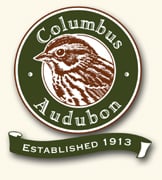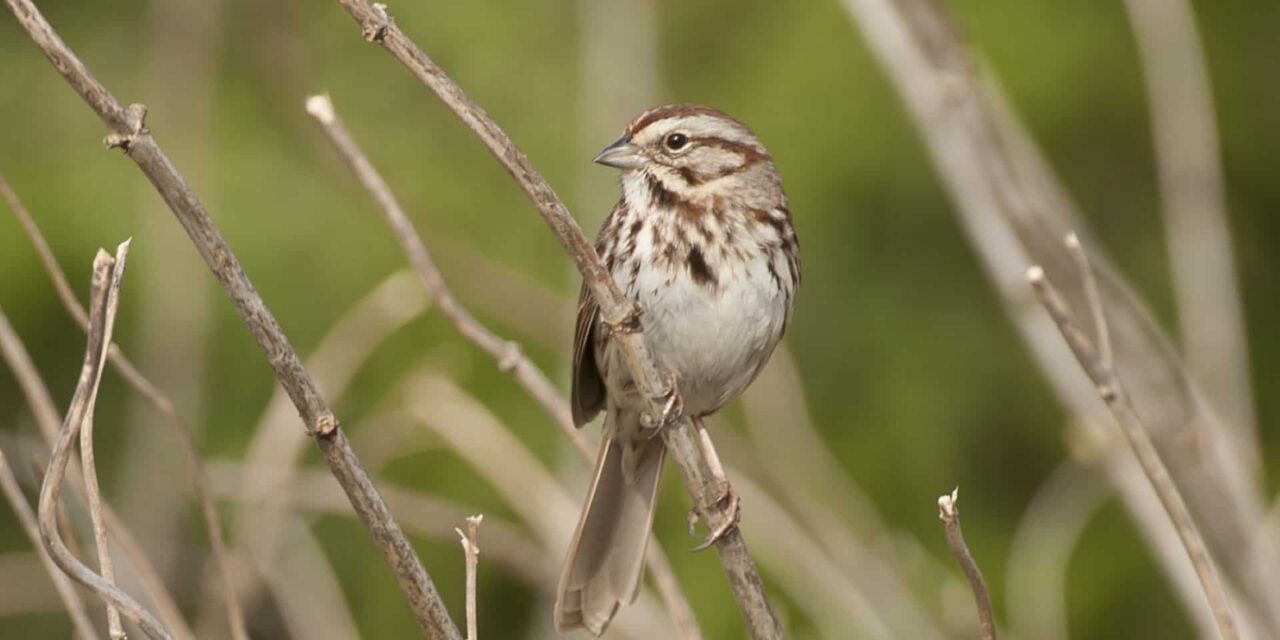
Margaret Morse Nice: One Woman’s Contribution to Ornithology
Margaret Morse Nice’s groundbreaking scientific contributions on the life histories of Song Sparrows put Ohio on the map of the ornithological world. Indeed, no one has more impacted birding and ornithology locally and internationally than Nice. From her first thorough observations – at the tender age of thirteen – of brown leghorn hens to her much heralded work on Song Sparrows, she persevered in a man’s world of ornithology to develop the science of ethology. This accomplishment was recognized by Konrad Lorenz, a 1973 Nobel Prize winner for behavioral studies. According to Lorenz, “her paper on the song sparrow was, to the best of my knowledge, the first long term field investigation of the individual life of any free living wild animal.”
Early Life
Born in Amherst, Massachusetts in 1883, her love of the natural world developed early on. Her father, a professor at Amherst College, and mother, a Mt. Holyoke graduate, encouraged their daughter’s forays into the countryside, supported her in developing and tending her own garden and guided her on the care of her many pets. It was perhaps because of these experiences that her love of birds and keeping meticulous records emerged early on. By age thirteen, she was keeping thorough notes on her sister Sarah’s brown leghorn hens. Her notes included “who pecked whom” and “who bossed whom.” (She read some 30 years later about a “newly” studied behavior called the “peck order.”)
As her teens approached, she became very frustrated and depressed. Her parents preferred their daughters take the traditional route of preparing for marriage and motherhood rather than for a profession.
University Training
Margaret entered Mount Holyoke in 1901 and graduated in 1906. Not enamored of studying stuffed bird specimens in her zoology classes, she ventured into the woods and fields on her own so she could study living birds.
Unhappy at the prospect of becoming a “daughter at home” until marriage, she convinced her parents to allow her to further her studies at Clark University under the tutelage of Dr. Clifton Hodge. She studied child psychology and zoology. During this time she met her future husband, graduate student Leonard Blaine Nice. They married in 1909 and she followed him first to Harvard, then to Oklahoma where he taught physiology. She put her career on hold so Blaine’s could flourish.
Family Life
By 1923, the Nices had welcomed five daughters. With a house to run and five daughters to care for, little time was left for observing quail and other birds. What kept her going during the early years of motherhood was documenting her daughters’ early speech patterns. She went on to write articles (published in the Pedagogical Seminary Journal) on the role of the environment in Constance’s language development, and contrasted, in another article, Marjorie’s vocabulary with that of her older sister. Thankfully, as the children got older, the entire family helped Margaret get back to her true avocation and often traveled Oklahoma by car to count birds. She and Blaine coauthored the University of Oklahoma bulletin Birds of Oklahoma , first published in 1924.
In 1927, Blaine took a position on the faculty of Ohio State University and the family moved to Columbus. Tragedy struck that winter when nine-year-old daughter Eleanor died of pneumonia. Margaret dealt with her grief in part by becoming involved with the Columbus Audubon Society.
Studies in Columbus
Her work in Columbus is what really set Margaret apart from ornithologists of the day. Namely, her in-depth study of Song Sparrows at Interpont, the Nice’s 60-acre property of “tangles of trees, weeds and bushes” along the Olentangy River. Her detailed and focused behavioral study put her in the forefront yet no one at the time wanted to publish her lengthy two-volume study in their journals. The study, which spanned eight years, detailed the daily activities of several generations of Song Sparrows, including territorial spats between at least two males, “Uno” and “4M.”
Fame and Reputation
Over the years, Margaret Nice became know internationally for her 250 publications on birds in scientific journals, seven of book length and 3,313 reviews of other people’s work. It was her international professional friends who helped get her Song Sparrow study published. In their later years, she and Blaine became active conservationists. Both died in 1974.
Further Reading
To learn more about Margaret Morse Nice and her work, check the following sources:
- Studies in the Life History of the Song Sparrow (2 volumes), Margaret Morse Nice; Dover Edition; 1964.
- The Watcher at the Nest, Margaret Morse Nice; Dover Edition; 1939, 1967.
- Research is a Passion with Me, Margaret Morse Nice; Consolidated Amethyst Communications, Inc.; 1979.
- Bird Watching with Margaret Morse Nice, Michael Elsohn Ross; Illustrator-Laurie A. Caple; Carolrhoda Books, Inc.; 1997.
You still can find copies of the books mentioned above. Visit your local bookstore, or check out listings on sources such as Thriftbooks.com (used books), Barnes & Noble, or Amazon.




